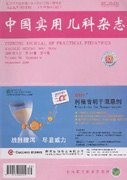Sudden death syndrome is the leading cause of child death in high income countries. It affects neonates to adults. The seemly healthy person suddenly died during a daily activity,sleep or exercise. Underlying genetic disorders are main causes of sudden cardiac death or brain death. Sudden unexplained death syndrome was first noted in 1977 in the United States of America. In some countries such as the United States of America,England,Thailand and Japan,the etiological studies were performed in the cases died suddenly. Those studies showed that heart attack and encephalopathy due to varied genetic disorders are the two major causes. Sudden cardiac death accounts for more than half of the cases. Sudden death or sudden death-like syndrome,would be the first manifestation of underlying inherited metabolic disorders and endocrine disorders,such as primary carnitine deficiency,long QT syndrome,arrhythmia,hypomagnesemia,hypokalemia,hyperkalemia,hypocalcemia,hypoglycemia,mitochondrial diseases,etc. Inherited metabolic disorders and endocrine disorders include thousands of diseases,such as amino acids,organic acids,glucose,fatty acids and electrolytes metabolic disturbance. Some patients presented as acute critical illness and sudden death. Some disorders could be detected by newborn screening or selective screening using biochemical,electrophysiological,imaging,pathological or genetic techniques. The mortality and disability could be reduced by effective intervention of diet and medicine.

